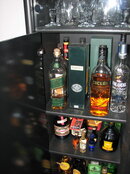I have to get to this thread one more time to clear up some comments I made previously.
1. The original question from Apollon was about him loosing his computer and not having money to replace it and if he could dive without one using tables?
Simple answer YES.
2. Sometimes when I try to be funny, I will come across as being a jerk. (Sorry Stu S.). There are of course different tables based on the different algorithms which will lead you to different results.
3. Same apply to diving computers with the addition that you could change certain setting on most computers to make your diving more or less conservative.
4. Diving computer is not a magic box which monitors your body or diving conditions. It is a processor with a database based on the same theoretical algorithms as tables. Please don't tell me (except for Stu S., he has a free shot at me) that there are different models (I know that). They're all just the theoretical models.
Maybe one day there will be a probe which we will stick inside of our body and it will monitor our offgasing :cheeky:, but till that happened we have to live by accumulated experiences of previous divers and theoretical models based on various practical testing.
5. I am personally quite pro-computer (I better be, I spent enough money on the darn things) and as Stu S. rightly said, computer doesn't restrict your dives the way table would. When was a last time you dove a square profile on a recreational dive?
6. It is a personal preference if you dive a computer or tables. Neither choice is only right or wrong.
There are many divers who never use a diving computer and they prefer it that way.
There are many divers who would not dive without one and they prefer it that way too.
And there are many of us who might dive with a computer or two, or a computer in the gauge mode. It all depends on what we're doing in the water that day.
7. I don't have a problem with any of those choices. Just as I said before, be comfortable with YOUR choice, have a clear understanding of your computer or tables, understanding of your bailout procedures, don't blindly follow neither tables nor a computer.
Plan your dive and dive your plan, have a fun, stay safe.

Sorry about the dead horse, I just like to put it in.





